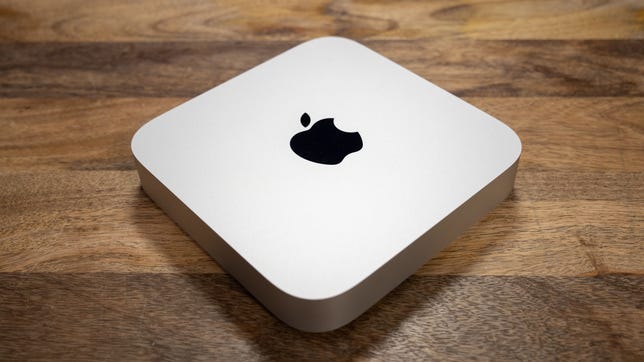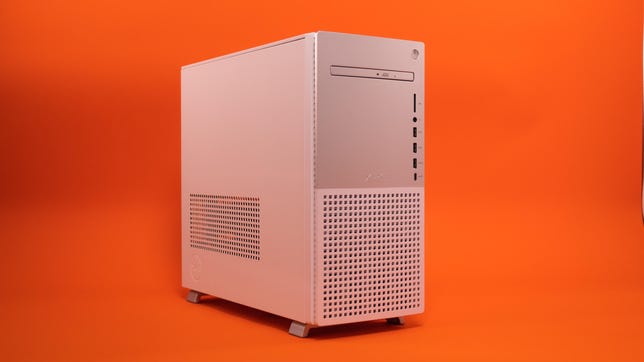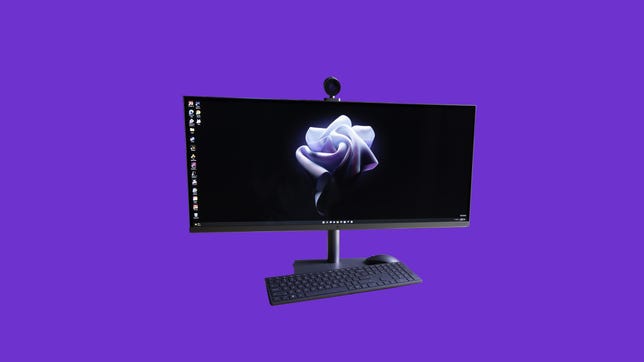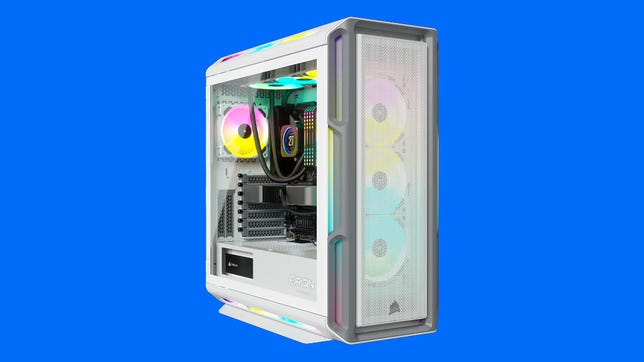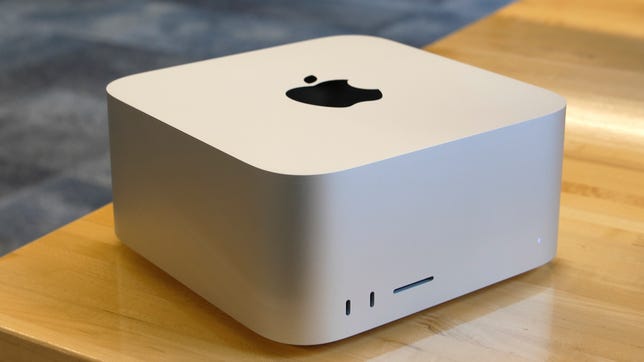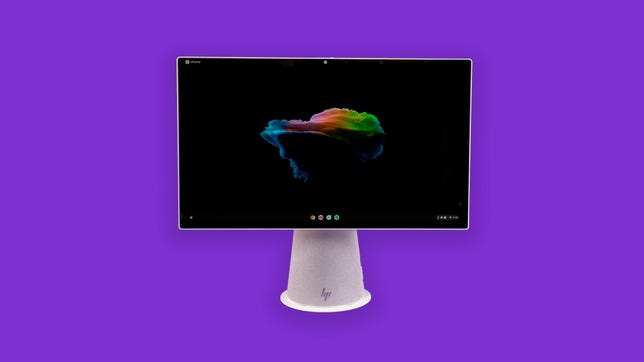Technologies
Best Desktop Computers for 2023: Apple, Dell, HP and More
Looking for a new desktop computer? Here are our expert opinions on the best desktops around from Dell, Apple, HP and more.

In this article:
- Desktop PCs: Tested and recommended
- Other recommended desktop PCs
- What about a Mac Pro?
- Chromebox, Mini PCs and other niche options
- How we test computers
Modern laptops and tablets may be great for those on the move, but you just can’t beat the power and efficiency of a desktop computer. Only one-fifth of computerssold these days are desktops, but once you see what the right desktop has to offer, you’ll realize they’re worth considering.
The best feature of most desktop PCs is their upgradability and longevity. Not only are desktops built more solidly, but they suffer far less wear and tear than a conventional laptop. You can often get a decent bit more power and expandability than you could from a laptop, including higher-end graphics cards and more storage options. That processor power and storage potential are particularly crucial if you’re planning to use your personal computer as a gaming PC or a graphics-editing powerhouse.
A desktop computer is generally going to come in the form of either a tower or an all-in-one (with an integrated screen), though there are smaller designs (sometimes called «small form factor PCs») like the Mac Mini for tighter spaces.
Though laptops still occupy the majority of our editors’ time and effort with CNET’s hands-on reviews, we’ve rounded up recent products to bring you our top desktop computer options, listed below. This list starts with models we’ve tested, and then moves on to more general configuration suggestions that we haven’t specifically tested, but the specs listed should deliver considerable value for the price, based on our experience with similarly configured PCs.
Unless otherwise indicated, the products listed below don’t include a monitor, keyboard, mouse or webcam. You’ll need to bring your own or buy them separately. We’ll update this best desktop computer list periodically.
Desktop PCs: Tested and recommended
These are the best desktop PC models that we’ve recently tested and can recommend based on our hands-on experience.
Lori Grunin/CNET
Now available in a new, more powerful version, the Mac Mini desktop is one of Apple’s longest-standing product lines, dating back to 2005 (in a pre-Intel version), a year before the first MacBook. All these years later, it retains the same basic shape and appeals to much of the same audience. Unlike Apple’s MacBook Pro and Air laptops, or the iMac desktop, the Mini is designed to work behind the scenes, fitting into small spaces and pairing with your choice of display and input devices.
At $599 (£649, AU$999) to start, the Mini remains the least expensive way to get a MacOS computer by a large margin. The relatively ancient M1 MacBook Air from 2020 is the closest competitor price-wise, at $999. The M2 Pro version of the Mac Mini starts at $1,299.
Joshua Goldman/CNET
While we like all-in-ones for their convenience, they’re not easy to upgrade, if they can be at all. Dell’s XPS Desktop is compact and quiet enough for a small workspace but can be loaded with a 12th-gen Core i9 processor, an Nvidia GeForce RTX 3080 Ti graphics card, up to 64GB of memory and 4TB of storage — and there’s still room inside for more. And if you have modest needs now, but want the room to add in components down the road, the base XPS starts at under $800. However, if you do plan to upgrade down the road, spend a little extra for its 750- or 1,000-watt power supply. Want to spend a bit less? Check out the more affordable desktop computer options recommended further down the page.
Read our Dell XPS Desktop 8950 review
Lori Grunin/CNET
Both Apple and Microsoft have discontinued their bigger-screen all-in-one desktops, so as one of the sole remaining premium big-screen options (as far as I can tell), the HP Envy 34 AIO is almost the best choice in that class by default.
It’s a fine system with a nice 34-inch display and some useful features, like a magnetically attachable webcam and Qi charging pad in the base, although you’re paying for pretty and not for performance (but it does have a laptop-version Nvidia 3060 GPU). We like the HP Envy 34 AIO, and it certainly feels like a nice home or traditional office system for people who need big screens in a small space.
Dan Ackerman/CNET
Introduced in 2021, this fully redesigned iMac is still Apple’s current go-to all-in-one (note that the larger 27-inch iMac has been discontinued as of March 2022). It’s built on the same M1 chip found in many of Apple’s computers, with a gorgeous 24-inch screen replacing the previous 21.5-inch version. The 1080p webcam is a big upgrade, and the rainbow of available colors — hearkening back to the 1999 iMac G3 — is a welcome addition. Just be prepared to spend up for the myriad storage and accessory upgrades.
Read our 24-inch Apple iMac review
Origin PC
If you’re dissatisfied with the lack of configuration options available for prebuilt gaming desktops, going with a custom builder is the best way to sate your appetite. The $5,000-plus price of this custom-configured system fully decked out is too rich for, well, most people’s blood. And many people don’t need everything maxed out, even for gaming. But you can get reasonable configurations for about half the price of my evaluation unit.
Origin PC builds good, solid systems. Unless you’re looking for something dirt cheap, you’ll be able to put together something you like at a price you tolerate.
Richard Peterson/CNET
The Mac Pro has long been the top dog in Apple’s computer lineup, but the current version is an aging Intel model that starts at a whopping $5,000. By comparison, the new-for-2022 Mac Studio is powered by the latest, greatest Apple silicon chips — the M1 Max or M1 Ultra — and starts at less than half that price. It’s basically a Mac Mini on steroids, and — for anyone who doesn’t want to wait for the eventual Mac Pro revision — it’s your best bet for running creative-centric Mac apps, including animation, graphics, video-editing and audio-editing software.
Josh Goldman/CNET
Compact all-in-one desktops make good centralized family computers. The HP Chromebase takes it a step further by pairing one with the simple and secure Chrome OS — the same operating system found on the Chromebooks your kids are probably using at school. With a 21.5-inch touchscreen attached to a gray fabric-covered base, the desktop looks like a supersized version of Google’s own Nest Hub smart display (and with Google Assistant baked in, you can use it like one, too). Inside, though, is up to an Intel Core i3-10110U processor, up to 16GB of memory and up to a 256GB PCIe NVMe SSD. The full-HD display even rotates vertically, perfect for viewing vertical videos, following recipes or scrolling your favorite sites.
Other recommended desktop PCs
We haven’t reviewed the specific models below, but we have reviewed systems using very similar hardware. These general configurations should serve you well, especially if you shop around for frequent deals.
Basic Windows PC tower (starting around $620)
The specs we’d suggest for a basic Windows 11 machine:
- Intel Core i5 (12th or 13th-gen) or AMD Ryzen 5 (3000 or 5000 series)
- Default integrated graphics (such as Intel UHD or Iris or baseline AMD Radeon)
- 512GB or larger NVMe SSD drive
- 16GB of RAM or more
- Four or more USB 3.1 or 3.2 ports with USB-C and USB-A formats (at least one or two on the front)
- Wi-Fi and Bluetooth wireless
- At least one PCI-E (x16) expansion slot (for adding a video card)
- Optional: DVD or Blu-ray optical drive (only if you need it for legacy software or media)
With those specs in mind, you should be able to find a good PC tower from brands like Dell, Acer, Asus or HP for between $500 and $600. Here are some that fit the bill, offering a great bang for the buck if you don’t need a laptop:
Acer Aspire TC-895-UA92 (under $650)
Aside from a slightly older 10th-gen Intel Core i5 CPU, this configuration otherwise includes everything listed above, along with Wi-Fi 6 compatibility and a keyboard and mouse, too.
HP Pavilion Desktop TP01-2040 (under $700)
This system offers a capable AMD Ryzen 5 CPU, and HP throws in a mouse and keyboard.
PC tower for light gaming and creative duties (starting around $900)
Want to do some PC gaming, or do you spend time editing photos or video? You’ll want to level up the preceding configuration with more RAM and better graphics options. Expect price points to be between $800 and $1,200 — and even higher if you go for a more bleeding-edge video card.
- Nvidia GTX/RTX or AMD Radeon RX graphics card (GPU)
- 16GB of RAM or more
- 350-watt (or more) power supply
Looking for a gaming computer with more muscle? Check out our list of best gaming PCs.
HP Pavilion Gaming Desktop (under $1,000)
This HP rig boasts an 11th-generation and Nvidia GeForce GTX 1650 GPU and 16GB of RAM.
Basic Windows All-in-One (starts around $800)
An «all-in-one PC» (also known as AIO PC) is basically a Windows version of an iMac. That means the PC «guts» are essentially built into a monitor or its base. Unlike the PC towers listed above, all-in-ones generally offer no ability to upgrade the graphics card, and maybe not even the storage or RAM. The advantage is having fewer cables, however, since everything is integrated into the body.
Recommended specs for an all-in-one are mostly similar to the basic tower above, albeit with compromises because of space considerations. Don’t expect an optical drive, for instance, and know that performance is often a step down from «real» desktop models because some all-in-ones use laptop components to better maximize available space. You’ll want a large screen with good resolution. The sweet spots we’d suggest are:
- 24 inches at 1,920×1,080 pixels (aka 2K or 1080p)
- 27 inches at 2,560×1,440 pixels (aka 1440p)
- 32 inches at 3,840×2,160 pixels (aka 4K)
The 24-inchers are good for kids, but adults should probably go for 27 inches and up. Expect to pay at least $800 at that latter size, especially if you want to avoid underpowered Intel Core i3 or AMD Athlon CPUs. The HP Envy 32/34 and Apple iMacs are examples of high end all-in-one computers, but here’s a more reasonably priced alternative.
Acer Aspire C27-962-UA91 (starts around $600; low stock)
While the screen on this Acer Aspire model is a spacious 27 inches, resolution is only 1080p (also known as full HD) — but that’s par for the course below $1,000. This model also lacks a DVD drive and USB-C ports. That said, you get a 10th-gen Intel Core i5 CPU, on-board Nvidia MX graphics (not as good as a GTX or RTX card, but better than average), 512GB of SSD storage and a built-in webcam (along with a keyboard and mouse).
HP All-in-ones (recommended models starting at $800)
Back in early 2020, we reviewed the HP Envy 32, a Windows take on the basic iMac design. At that time, it had somewhat dated specs: a ninth-gen Intel CPU and a spinning hard drive backing up the 256GB solid-state drive. The 32-inch model appears to have been discontinued, but HP maintains a stable of current models in 22- to 27-inch screen sizes, with a new $2,000 34-inch HP Envy 34 now living at the top of the line.
What about a Mac Pro?
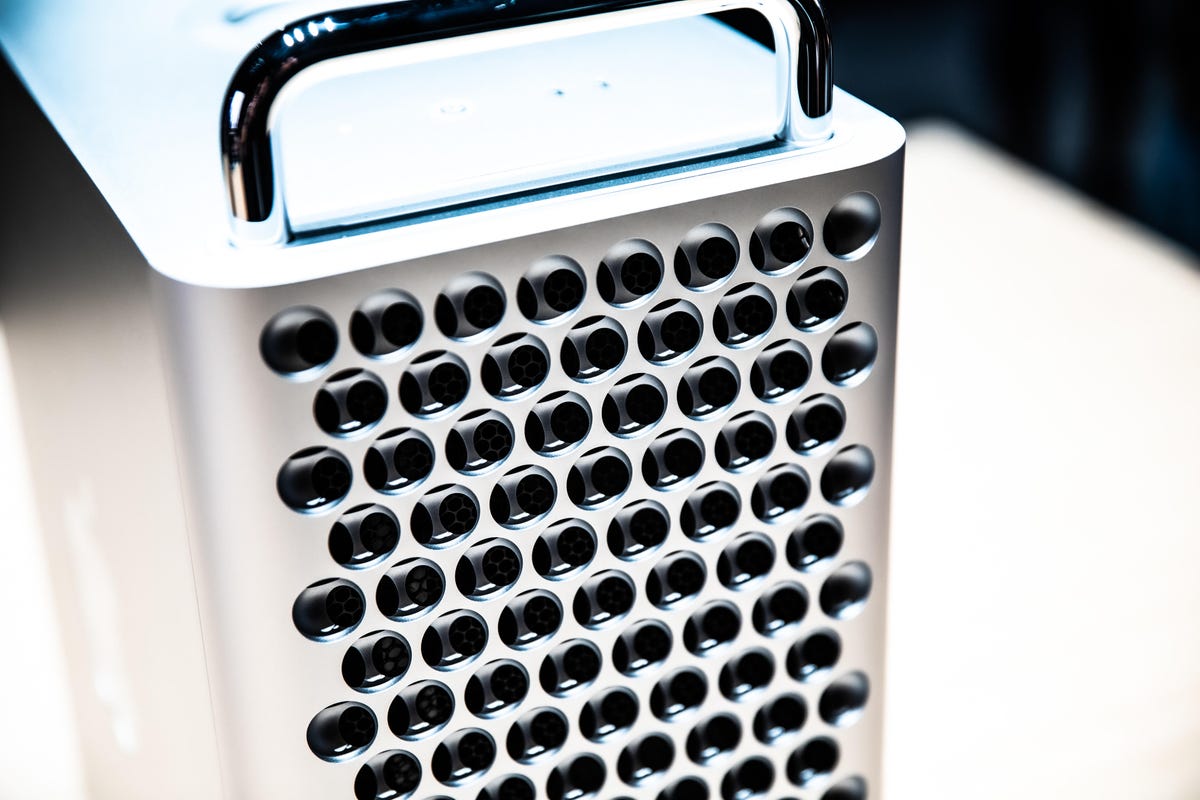

While you’re paying a big premium for the Apple name, an iMac is generally a great option for Apple fans who want an all-in-one computer with a superior display. And now that the 24-inch iMac has gotten a nice overhaul, complete with the M1 chip, that’s a great starting point. And while the 27-inch iMac is no more, the new Mac Studio starts at $2,000, and offers some serious power, especially if you ramp up to the M1 Ultra chipset.
Need even more power? While Apple has a Mac Pro living at the top of its desktop line, the current model is an aging Intel design, which the company has already pledged to replace with an Apple Silicon version. If the Mac Studio can’t handle your high-end Apple needs, we’d strongly recommend steering clear of the Mac Pro until that new version hits.
Chromebox, Mini PCs and other niche options
When it comes to desktop PCs, towers and all-in-ones represent the vast majority of the market. There are alternatives, but in the 2020s, they generally represent increasingly narrow slices of that market.


Left to right: The HP Mini, Acer Revo, Intel Compute Stick and Apple Mac Mini. The Mac is the only one that’s been recently updated.
Sarah Tew/CNETMini PCs: Following the debut of the Mac Mini in 2005, Windows PC makers experimented with similarly tiny designs. In the wake of likable small models like the Acer Revo One and HP Pavilion Mini, we even saw (woefully underpowered) «PC on a stick» offerings starting in 2015, but interest seems to have ebbed since then. Outside of specialty vendors like Beelink, the best choices in this mini PC size are probably the Intel NUC (Next Unit of Computing), most of which are sold as hobbyist options, requiring some BYO additions like user-supplied storage, RAM and other components — including the operating system. See more bare-bones Mini PCs at Newegg.
Chromeboxes: If you’re looking for very basic computing — browsing the web, email, social media, YouTube and the like — the Chrome operating system is the most affordable route for home computing. This Google operating system effectively is little more than the Chrome web browser. That makes it easy for multiple users (only a Gmail address is needed to log in), and — because there’s no heavy operating system beyond the browser — viruses aren’t really an issue. Colloquially known as «Chromeboxes» (versus a «Chromebook» laptop), these systems don’t have beefy CPUs, RAM or storage requirements. That said, if you need any software beyond browser-based web apps, or if you don’t have excellent broadband, you’ll want to stick with Windows or Mac options above. Now, before you spend any money, you should check out the free version of the operating system known as ChromeOS Flex, which you can install on most old PCs (including running it from an attached USB drive). But if that’s not an option and you want to buy new, expect to pay between $200 and $500 for a Chrome-based desktop. However, the closer you get to that $500 price point, the more you should consider stepping up to a Chromebook laptop or a basic Windows tower (see above) for just a bit more. See Chromebox options at Newegg.
Linux PCs: No, Windows, Mac and ChromeOS are not your only operating system options. There’s a wide world of Linux operating systems out there, many of which are effectively free. You can get PCs with Linux preinstalled, but the better, more affordable option is probably installing it (or dual-booting) on a used Windows PC. See Linux PC options at Newegg.
Raspberry Pi: You may have heard of a small computer that’s no bigger than a paperback book, and can be had for about $150. That’s the Raspberry Pi, and it’s 100% real and very cool — if you’re a hobbyist looking to build your own Lego-style computer and install your own custom Linux operating systems. We just wouldn’t recommend it as a primary computer if you’re looking to run mainstream software. See the Raspberry Pi 4 kit at Amazon.
Best laptops in every category
- Best Laptop for 2023
- Best Windows Laptops
- Best Laptop for College
- Best Laptop for High School Students
- Best Budget Laptop
- Best Dell Laptops
- Best 15-Inch Work and Gaming Laptops
- Best 2-in-1 Laptop
- Best HP Laptops
- Best Gaming Laptop
- Best Cheap Gaming Laptop Under $1,000
- Best Chromebook: 8 Chromebooks Starting at Under $300
How we test computers
The review process for laptops, desktops, tablets and other computer-like devices consists of two parts: performance testing under controlled conditions in the CNET Labs and extensive hands-on use by our expert reviewers. This includes evaluating a device’s aesthetics, ergonomics and features. A final review verdict is a combination of both those objective and subjective judgments.
The list of benchmarking software we use changes over time as the devices we test evolve. The most important core tests we’re currently running on every compatible computer include: Primate Labs Geekbench 5, Cinebench R23, PCMark 10 and 3DMark Fire Strike Ultra.
A more detailed description of each benchmark and how we use it can be found in our How We Test Computers page.
Technologies
Today’s NYT Strands Hints, Answers and Help for Nov. 28 #635
Here are hints and answers for the NYT Strands puzzle for Nov. 28, No. 635.
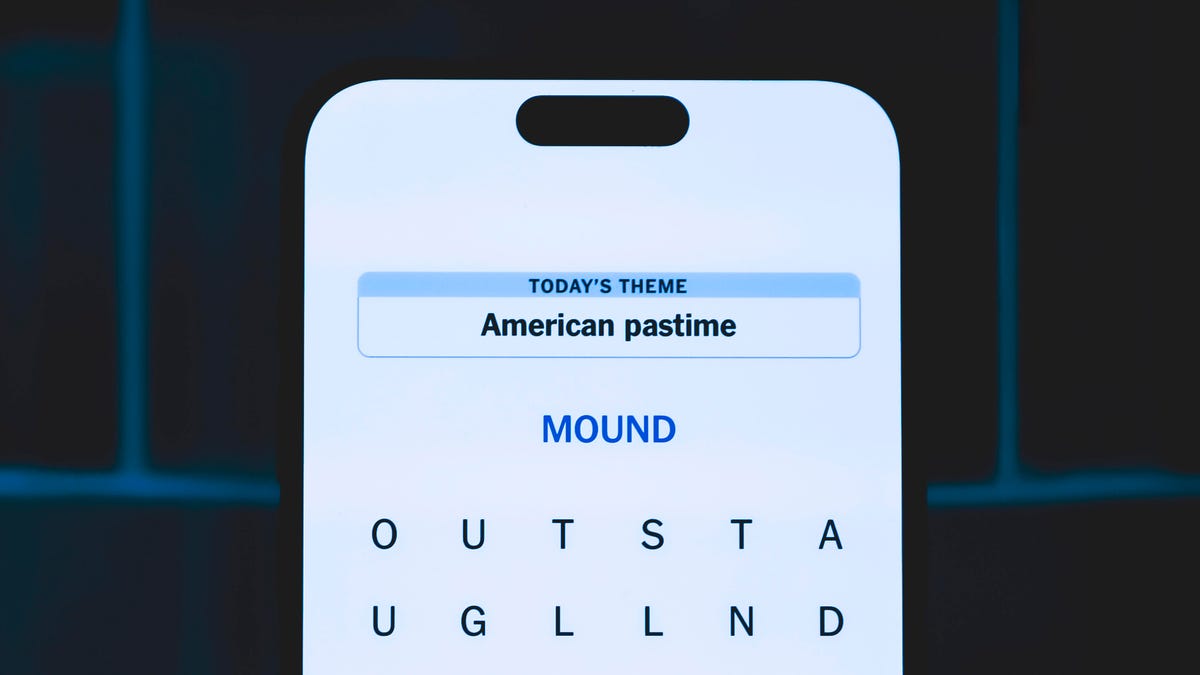
Looking for the most recent Strands answer? Click here for our daily Strands hints, as well as our daily answers and hints for The New York Times Mini Crossword, Wordle, Connections and Connections: Sports Edition puzzles.
Today’s NYT Strands puzzle is pretty tricky. If you’re not familiar with certain superstitious beliefs, you might not find all the answers. And some of the answers are difficult to unscramble, so if you need hints and answers, read on.
I go into depth about the rules for Strands in this story.
If you’re looking for today’s Wordle, Connections and Mini Crossword answers, you can visit CNET’s NYT puzzle hints page.
Read more: NYT Connections Turns 1: These Are the 5 Toughest Puzzles So Far
Hint for today’s Strands puzzle
Today’s Strands theme is: If all else fails…
If that doesn’t help you, here’s a clue: Don’t tell, it won’t come true.
Clue words to unlock in-game hints
Your goal is to find hidden words that fit the puzzle’s theme. If you’re stuck, find any words you can. Every time you find three words of four letters or more, Strands will reveal one of the theme words. These are the words I used to get those hints but any words of four or more letters that you find will work:
- GLUB, RATS, TARN, DALE, FONT, FOUNT, LASH
Answers for today’s Strands puzzle
These are the answers that tie into the theme. The goal of the puzzle is to find them all, including the spangram, a theme word that reaches from one side of the puzzle to the other. When you have all of them (I originally thought there were always eight but learned that the number can vary), every letter on the board will be used. Here are the nonspangram answers:
- DANDELION, STAR, COIN, FOUNTAIN, LADYBUG, EYELASH
Today’s Strands spangram
Today’s Strands spangram is MAKEAWISH. To find it, start with the M that’s three letters down on the far right, and wind backwards.
Technologies
Today’s NYT Connections Hints, Answers and Help for Nov. 28, #901
Here are some hints and the answers for the NYT Connections puzzle for Nov. 28, #901.
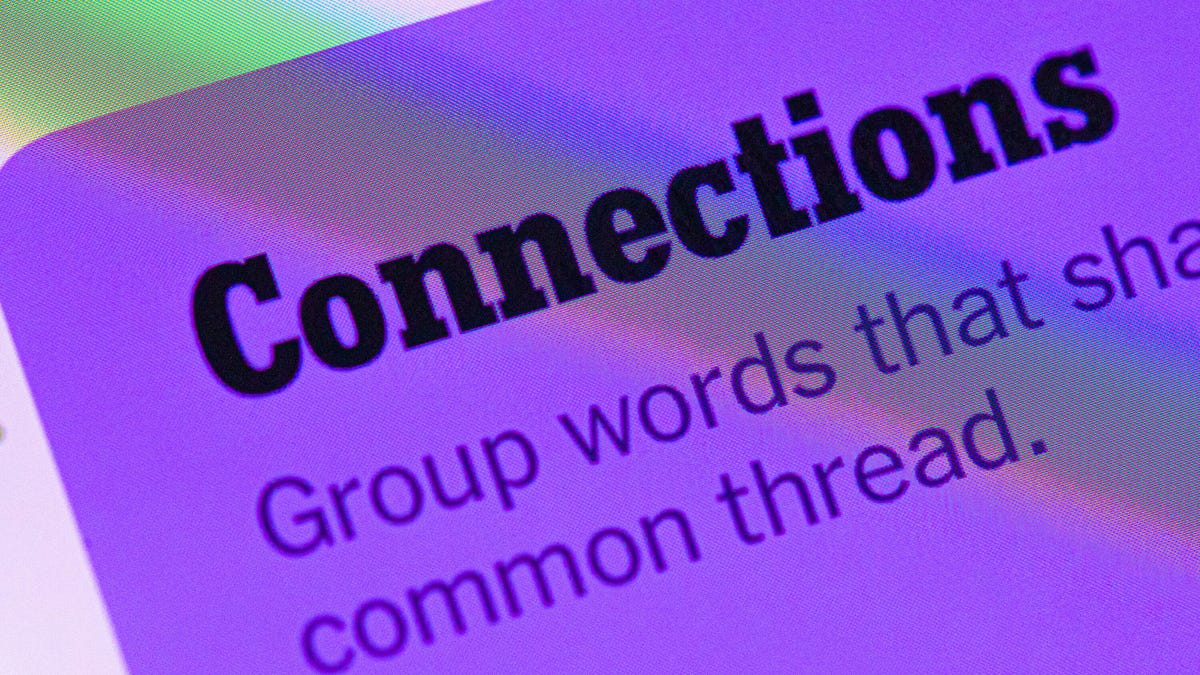
Looking for the most recent Connections answers? Click here for today’s Connections hints, as well as our daily answers and hints for The New York Times Mini Crossword, Wordle, Connections: Sports Edition and Strands puzzles.
Today’s NYT Connections puzzle is kind of tough. If you need help sorting the answers into groups, you’re in the right place. Read on for clues and today’s Connections answers.
The Times now has a Connections Bot, like the one for Wordle. Go there after you play to receive a numeric score and to have the program analyze your answers. Players who are registered with the Times Games section can now nerd out by following their progress, including the number of puzzles completed, win rate, number of times they nabbed a perfect score and their win streak.
Read more: Hints, Tips and Strategies to Help You Win at NYT Connections Every Time
Hints for today’s Connections groups
Here are four hints for the groupings in today’s Connections puzzle, ranked from the easiest yellow group to the tough (and sometimes bizarre) purple group.
Yellow group hint: Appropriate.
Green group hint: I win!
Blue group hint: Musical instrument.
Purple group hint: Time to talk.
Answers for today’s Connections groups
Yellow group: Fitting.
Green group: Achieve victory over.
Blue group: Parts of an electric guitar.
Purple group: Phonetic elements of speech.
Read more: Wordle Cheat Sheet: Here Are the Most Popular Letters Used in English Words
What are today’s Connections answers?
The yellow words in today’s Connections
The theme is fitting. The four answers are fair, just, proper and right.
The green words in today’s Connections
The theme is achieve victory over. The four answers are beat, best, take and worst.
The blue words in today’s Connections
The theme is parts of an electric guitar. The four answers are fret, peg, pickup and string.
The purple words in today’s Connections
The theme is phonetic elements of speech. The four answers are intonation, loudness, rhythm and stress.
Technologies
Anker’s New MagSafe Car Mount Keeps Your Phone Cool While Charging, and It’s 30% Off for Black Friday
Get wired-like charging speeds and MagSafe compatibility with Anker’s wireless car charging bundle for $62.99.
Black Friday is the best time of the year to upgrade the little essentials that make your everyday tech life more pleasant. I’ve found the perfect deal to amp up the phone charging setup in your car. This Anker MagSafe wireless car charging bundle is 30% off for the holidays, and it gives your iPhone a fast and steady way to power up while you navigate. It delivers up to 25-watt wireless charging speeds and with onboard active cooling, your phone stays comfortable to the touch.
Get it now for $62.99 verses the list price of $89.99.
What sets this charger apart is that its performance and cooling tech is built into a surprisingly compact package. The stand uses an ultra-strong Qi2 magnetic lock to keep your phone secure through bumps and turns. You can even tilt the mount and switch between portrait and landscape modes for navigation without blocking the view. The bundle has everything you need to get started including a 60-watt dual-USB-C charger, an adequately long USB-C cable, and cable organizers for a clean setup. Anker also includes a two-year warranty for peace of mind.
If you are getting your car prepped up for driving to a holiday vacation or just need a faster charging mount for your daily commute, this deal makes a lot of sense. CNET’s experts are also tracking more Black Friday and Cyber Monday picks across Apple products, headphones, and more, so you can score more savings before the sales season wraps up.
MOBILE DEALS OF THE WEEK
-
$749 (save $250)
-
$475 (save $175)
-
$499 (save $300)
-
$900 (save $400)
Why this deal matters
A high quality charger is a great addition to any car to speedily top up your phone on the go. You will especially want to look out for options from a top-tier brand like Anker for its fast charging speeds and reliability. This Black Friday deal is an excellent opportunity to save big on a staple car accessory. With holiday shopping heating up and tech accessories being one of the most popular categories, we expect the deal to sell out quick. So don’t wait too long before jumping on it.
Don’t miss any of our unbiased tech content and lab-based reviews. Add CNET as a preferred Google source.
Join Our Daily Deals Text Group!
Get hand-picked deals from CNET shopping experts straight to your phone.
By signing up, you confirm you are 16+ and agree to receive recurring marketing messages at the phone number provided. Consent is not a condition of purchase. Reply STOP to unsubscribe. Msg & data rates may apply. View our Privacy Policy and Terms of Use.
-

 Technologies3 года ago
Technologies3 года agoTech Companies Need to Be Held Accountable for Security, Experts Say
-

 Technologies3 года ago
Technologies3 года agoBest Handheld Game Console in 2023
-

 Technologies3 года ago
Technologies3 года agoTighten Up Your VR Game With the Best Head Straps for Quest 2
-

 Technologies4 года ago
Technologies4 года agoBlack Friday 2021: The best deals on TVs, headphones, kitchenware, and more
-

 Technologies4 года ago
Technologies4 года agoVerum, Wickr and Threema: next generation secured messengers
-

 Technologies4 года ago
Technologies4 года agoGoogle to require vaccinations as Silicon Valley rethinks return-to-office policies
-

 Technologies4 года ago
Technologies4 года agoOlivia Harlan Dekker for Verum Messenger
-

 Technologies4 года ago
Technologies4 года agoiPhone 13 event: How to watch Apple’s big announcement tomorrow

